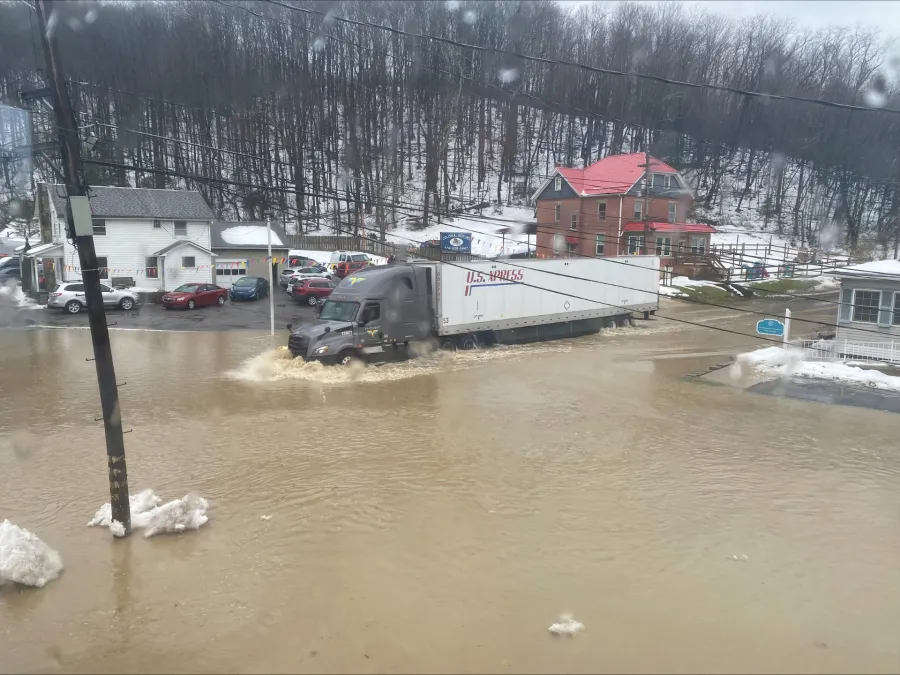West Virginia is on high alert as heavy rainfall, melting snow, and dangerous ice jams put Preston and Tucker counties under a flood warning until 7 p.m. EST Friday. The National Weather Service (NWS) in Pittsburgh warns that water levels in rivers, streams, and creeks are rising rapidly, creating conditions ripe for sudden, severe flooding.

Heavy Rain and Ice Jams Create Sudden Flood Risk
Between 0.5 and 1 inch of rain has already fallen across the area, but the real threat comes from ice jams that could break loose without warning. When this happens, floodwaters can surge downstream in an instant, submerging roads and sweeping through low-lying areas. Residents in flood-prone towns like Kingwood, Parsons, Terra Alta, Davis, and Thomas should stay alert and be ready to act quickly.
Flood-Prone Areas and Dangerous Roads
The threat isn’t just from rising water—it’s what happens when ice and debris clog rivers, creating temporary dams that can suddenly give way. Communities near riverbanks and streams, including Hambleton, Albright, Tunnelton, Aurora, Silver Lake, and Blackwater Falls, are at particular risk. Emergency officials are urging everyone in these areas to avoid flooded roads and unstable banks, which could collapse under the weight of rushing water.
Driving through floodwaters is one of the deadliest mistakes people make during severe weather events. The NWS stresses its life-saving warning: “Turn around, don’t drown.” Even just a few inches of fast-moving water can sweep a vehicle off the road, especially when floodwaters hide washed-out pavement or submerged debris.
If you live near a river or stream, keep an eye on water levels and be prepared to evacuate quickly if necessary. Many of the region’s waterways can overflow rapidly once an ice jam releases, giving little time to react. It’s important to listen to local alerts and avoid unnecessary travel until conditions improve.
What Officials Are Saying and How to Stay Safe
Emergency crews are on standby, monitoring vulnerable locations and urging residents to report any flooding they see. If you spot rising waters or blocked river channels, contact local authorities immediately. Your report could help them identify problem areas before they become dangerous.
Residents are advised to stay indoors, keep an emergency kit nearby, and avoid walking near swollen rivers or creeks. Ice jams are unpredictable, and water levels can spike within minutes. Even if flooding hasn’t reached your property, rising groundwater and overflowing streams can catch you off guard.

The combination of rain and snowmelt has already stressed local waterways, but officials believe conditions could worsen if another round of rainfall or sudden ice breaks occur. Staying informed is crucial. Sign up for local emergency alerts and check weather updates frequently to stay ahead of any sudden changes.

